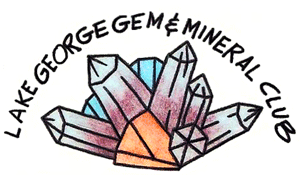By Steven Marquez
Bauxite is the most important ore of aluminum. Bauxite
is not a mineral since it lacks a fixed chemical composition; instead it is a
mixture of hydrous aluminum oxides, aluminum hydroxides, clay minerals; and
insoluble materials such as quartz, hematite, magnetite, siderite, and
goethite. The aluminum minerals in bauxite can include: gibbsite Al(OH)3;
boehmite AlO(OH); and, diaspora; AlO(OH).
Although aluminum is the most
abundant metal in the earth's crust, it is never found as a native element in
nature.
Bauxite was named by the French geologist Pierre
Berthier in 1821 after the hamlet of Les Baux in Provence, southern France,
where he discovered it and found that it contained aluminum. Elemental aluminum
was created by a complicated method that used expensive materials, making it
more valuable than gold and platinum at that time. Napoleon III of France at a
state banquet used an aluminum spoon while his guests used much cheaper gold
spoons.
Bauxite, mined in the state of Arkansas since 1896,
is the state rock. In Saline County, Arkansas, the town of Bauxite was
established as a mining and refining center for aluminum ore. Bauxite is
usually strip mined because it is almost always found near the surface.
FACTS ON FILE
Color: yellow, brown, red
Luster: non-metallic, earthy
Streak: white usually white but iron stain can
discolor the streak
Hardness: 1-3 (soft)
Cleavage: none
Specific gravity: 2.0 to 2.6
Fracture: Uneven
Crystal system: amorphous
Cleavage: none
Transparency: opaque
Diagnostic
properties: often exhibits a spherical or pisolitic
structure
Chemical
composition: variable (aluminum oxides and
aluminum hydroxides)
Primary
uses: main ore of aluminum, also used as an abrasive
BAUXITE HAIKU
(a poem by the
scientist Steven Marquez)
Metal trapped in stone
Aluminum hydroxide
Awaiting its fate
FURTHER READING
Bardossy, G. (1982). Karst Bauxites. Bauxite deposits on carbonate rocks. Elsevier Sci. Publ. 441 p.
Bardossy, G. and Aleva, G.J.J. (1990). Lateritic Bauxites. Developments in Economic Geology 27, Elsevier Sci. Publ. 624 p. ISBN 0-444-988
Grant, C; lalor, G and Vutchkov, M (2005). Comparison of bauxites from Jamaica, the Dominican Republic and Suriname. Journal of Radioanalytical and Nuclear Chemistry p. 385-388 Vol.266, No.3
ABOUT THE AUTHOR
Steven Marquez is an Earth Science Scholar with the Colorado Springs Mineralogical Society (Colorado). He is a volunteer in the mineral section of the Cripple Creek District Museum. Steven enjoys studying minerals and field work. He is in 8th grade.
 |
| Figure 2. Author Steven Marquez is panning gold. He is active in the study of rocks and minerals in the Pikes Peak region. Photo © by Steven Veatch. |



No comments:
New comments are not allowed.